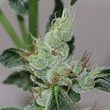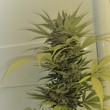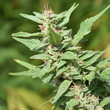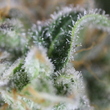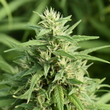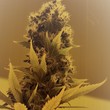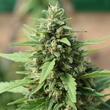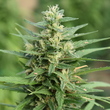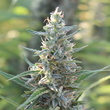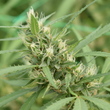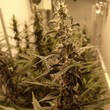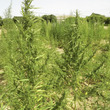
Our research lines
Our knowledge is mainly divided between agricultural activities and extraction and manufacturing activities, including techniques, confidential information, theories and private data.
The research and development program is directed especially to the selection and breeding of new chemotypes of medicinal plants that are optimally adapted to different production conditions, to the improvement of hybridization and cultivation techniques, and to the extraction of APIs and obtaining derivative products.
Papers
See more
See more
See more
See more
See more
See more
See more
See more
See more
See more
See more
See more
See more
See more
See more
See more
See more
See more
See more
See more
See more
See more
See more
See more
Breeding and cultivation

Hybridization, also known as plant breeding, aims to modify the hereditary message of a population or group of individuals, or of a single individual, in order to provide some added value in the following generations of individuals. The crops of economic interest have evolved over time and come from wild varieties with no economic interest or with significant production limitations. Through breeding we have managed to obtain varieties more productive, more sustainable, more resistant , or tolerant to certain growing conditions.
One of the main objectives of the department is to obtain new varieties with new agronomic and physiological traits on the market. For this, our breeding program uses hybridization (crossing) of different lines that are available in our seed bank, to create new genetic combinations that provide added value in the market
The different varieties of Cannabis, in addition to morphological, physiological and chemotype differences, can indistinctly be self-fertile or cross-breeding, and can reproduce sexually or asexually.
To achieve this, we count on the genetic characterization of most of our germplasm, for which we use both -traditional- genetic techniques (Mendelian, quantitative, population, cytogenetics, etc.) and molecular biology techniques, such as the assisted breeding by molecular markers or real-time PCR techniques.
We develop our breeding program under a AEMPS research license , under controlled conditions that are subsequently evaluated in the different productive situations that we can find in agricultural projects for the pharmacological market: greenhouses with different degrees of modernization, indoor cultivation of any kind or even semi-extensive production.
Get more informationExtraction

One of our main areas of research and development is the extraction of plant compounds, such as active principles, terpenes and fatty acids , which have potential applicability in the pharmaceutical, nutraceutical and dermocosmetic sectors.
In particular, we are investigating the applicability of extraction with supercritical fluids, which have several advantages in extraction processes since, by behaving as a liquid, it facilitates the dissolution of solutes while its behavior as a gas allows good penetration and easy separation of matrix. This leads to a faster, more efficient and more selective extraction process .
Another widely used and useful method in the production of plant extracts is extraction with organic solvents. With this method we can extract various plant compounds, such as active principles, terpenoids and fatty acids, being able to separate some substances depending on their solubility in different solvents. Currently, Spanish legislation on extraction solvents used in the food sector authorizes the use of different solvents for extraction and redissolution of extracts Extraction with organic solvents allows obtaining complete extracts of plants, or of the desired fractions, of food quality and phytopharmaceutical without compromising high production costs .
The basic method for extracting terpenes and obtaining essential oils that we are interested in is steam distillation. With this technique, substances that are immiscible in water, such as terpenes, can be separated and they decompose at their temperature of boiling or near boiling. Often used to separate natural essential oils found in leaves, husks, or seeds. Depending on the technique used to extract the terpenes, the purity and yield of the essential oil will change. Terpenes of plants are widely used for their aromatic qualities and play an important role in traditional medicine, herbal remedies, and we investigate their possible antibacterial effects and other pharmaceutical uses.
We also study the utility and industrial performance of cold-pressing oil extraction from seeds to ensure the molecular stability of polyunsaturated fatty acids, thus avoiding the dissolution of waxes and other substances. Seed oil is an essential food because it provides nutrients that the body cannot synthesize on its own, such as omega 6 fatty acids (linoleic acid and arachidonic acid) and omega 3 fatty acids (linolenic acid), and, in particular, The oil from the seeds of some plant species have important applications in the pharmaceutical, nutraceutical and dermo-cosmetic sectors.
Get more informationAsk for information
Can we be of help to you? Do you have any questions about us? Write to us and we will contact you as soon as possible.
